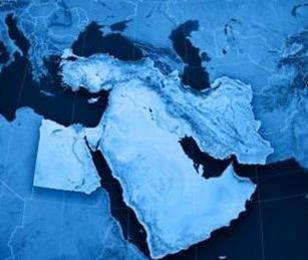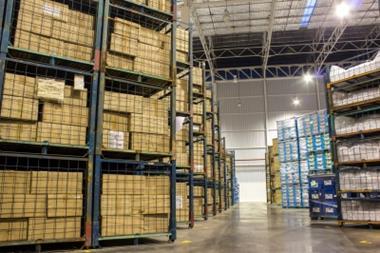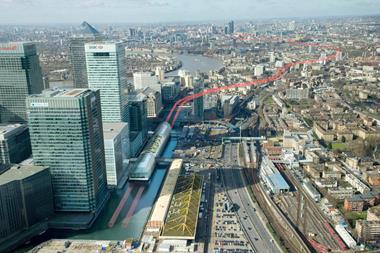Senior construction risk managers highlight talent acquisition and retention and resource scarcity as the biggest threats to hundreds of projects currently under construction

Valued at $1.3trn (€1.2trn), the construction industry in the Gulf Co-operation Council (GCC), which comprises Saudi Arabia, Kuwait, the United Arab Emirates, Qatar, Bahrain, and Oman, is a booming emerging market for construction businesses.
Hundreds of major projects are due to be completed between 2020 and 2030. So far, $935bn-worth of works are currently in execution, including long-term mega projects; $81bn of business is out to tender; $211bn-worth of works are in the design phase; and $136bn-worth of projects are in the study phase, according to a 2014 study by Middle East business information provider MEED.
Among these new builds are plans for large cities and business districts, sizable railway links, international airports and luxury housing, which are all under construction to meet the needs of the region’s rapid population growth (projected to increase by 30% to 53 million people by 2020).
Due for completion, for example, is the King Abdullah Economic City in Saudi Arabia. The project is estimated to cost $93bn and promises a 13.5km2 central business district, 48km2 of housing and 27km2 of luxury resorts and housing. New housing is indeed a priority for the region and, in 2014, residential developments accounted for almost 42% of completed projects. Extensive, pan-GCC transport links are also being built to connect the region’s states in the $30bn-Oman Rail network. The railway system will provide links from Oman to the other GCC countries.
The scale and pace of developments within the GCC are a catalyst for risk
These numbers, however, do not take into account two mega projects: the World Cup 2022, estimated to cost €190bn in construction, and the World Expo 2020 in Dubai, which is dubbed to be the largest ever exhibition site and will cost between €1.8bn to €3.7bn to build.
Although these developments create a positive outlook and are likely to boost the region’s economy as governments look to diversify and seek growth outside oil, from a risk perspective, exposure to business interruption (BI) is a major concern. Two major risks are likely to increase the possibility of BI: talent acquisition and retention and resource scarcity.
The fight for talent
Philip Wood, insurance senior manager at Qatari Diar Real Estate Development Company, a firm managing the development of the Qatari Lusail City (encompassing 19 districts of new housing, commercial premises, schools, mosques, medical facilities, sport, entertainment and shopping centres) – says that because the GCC relies heavily on expatriates “companies are competing for skilled staff”.
Indeed, in 2011, most people in the UAE and Qatar were foreigners – 87% and 84% respectively, according to a study by the Kuwaiti think tank Diplomatic Centre.
Frédéric Desitter, director of enterprise risk management at Qatar-based Sidra Medical & Research Center, adds: “One way to improve talent retention is to offer attractive terms and conditions, but this can go only so far. Other limits make talent acquisition and retention ever more challenging.
“There are, for example, limits in terms of the pool of skilled workers who have the knowledge, skills and experience to do the job across the world. Then, there are limits in terms of the number of skilled staff willing to leave their home town and set up base in a foreign country in order to take the job. So, businesses are competing for a limited pool of talent.”
Resources
With billions of euros worth of construction projects due for completion in the next decade, demand for materials such as steel is high, posing challenges for the number of businesses working to the 2020 to 2030 deadlines. “The scale and pace of developments within the GCC are a catalyst for risk,” says Wood. “The region is undergoing so much development and there are many major construction projects that the availability of resources is scarce and, on the ground, the increased interface risk must also be carefully managed to avoid potential delays/bottlenecks.”
Deistter warns that the consequences are costly delays. “It may be the case that some companies would need to reconsider their plans and schedules if they are unable to get supplies on time.”
Five mitigation steps
Mitigating these two particular risks and any threats to a construction project will take a multilayered risk management approach. Wood outlines five key procedures.
First risk managers must conduct due diligence assessments on all the parties engaged in projects, including contractors and consultants.
Second, the risk team should take a “savvy” approach to the allocation of contractual risk. Next, supply chain management is vital, particularly where competition for resources is fierce and risk managers must be proactive in how they manage the supply chain. It is then advisable for the risk team to implement “additional layers of defence and control”, in other words the “checkers should also conduct checks of other checkers [involved in risk and auditing]”.
Last, risk managers would be wise to take advantage of any best risk practices or methods.
”The region is undergoing so much development and there are many major construction projects that the availability of resources is scarce”
Future risks
However applying these mitigation techniques is not so straightforward in a market in which risk management is in its infancy. The main risk for the future is in how well risk management is supported and embraced throughout the GCC.
Risk management lags behind the region’s growth, with few small- to medium-sized organisations implementing risk practices. In recent years, however, larger companies have been investing in the function, with some building ERM framework into the business. Risk management is gaining momentum, but efforts to promote its benefits must continue, says Gregory Irgin, group director, group risk legal & insurance at Qatar-based UrbaCon Trading and Contracting – a company responsible for the building several hospitality, retail, and entertainment premises in the Qatar.
“The real concern is whether key risk assessments and mitigation techniques will be implemented, monitored and managed successfully throughout the [country’s] organisations and not left exposed owing to varying factors such as lack of leadership and support at the top and application and understanding of the technique at the bottom.”
He added that although there has been an “upsurge in ERM and project risk management with encouraging success”, challenges exist in terms of engaging executive management. “A risk framework may be designed to the point of excellence and sought to be implemented vertically and perhaps horizontally across an organisation, but challenges remain for those who must follow and report upward on such models. Chief executives lack understanding of risk management and they therefore do not prioritise it. Their main focus is on revenue generation and profits.”
Snapshot: key risks of construction in the GCC
Three key risks to achieving construction projects objectives in the GCC:
1. Unavailability of sufficiently skilled labour/contractors/consultants
2. Price inflation of materials
3. Unsuitable construction programme planning and management of mega-developments
Other risks, with perhaps a lower likelihood, may also affect the duration of a project, including:
4. Accidental damage to the works
5. Variations to design and/or programme
6. Lengthy approval processes
7. Dependencies on external providers, for example, utilities, transportation
Philip Wood, insurance senior manager at Qatari Diar Real Estate Development Company
Top five mega construction projects in the GCC
1. King Abdullah Economic City ($93bn), Saudi Arabia close to Rabigh, on the country’s western coast
Construction began in the third quarter of 2013 and should provide 14km2 seaport, as well as commercial properties and private housing
2. Lusail City ($45bn), Qatar
One of the biggest developments in the Middle East, the new city will accommodate the Lusail Iconic Stadium, an 80,000-seat stadium for the 2022 FIFA World Cup, housing for 200,000 people, as well as shopping malls, hotels, and two golf courses
3. Qatar Metro/rail network ($36bn)
The railway will provide transportation from Qatar to Bahrain and Saudi Arabia as part of the plan to construct a GCC-wide rail network
4. Oman Rail network ($30bn)
The network will connect Oman, the UAE, Saudi Arabia, Qatar, Bahrain and Kuwait as apart of a GCC-wide rail system
5. Jazan Economic City ($30bn), Saudi Arabia
The 103km2 site will accommodate a commercial business district, residential premises, a marina and facilities for education, hospitality and recreation




















No comments yet